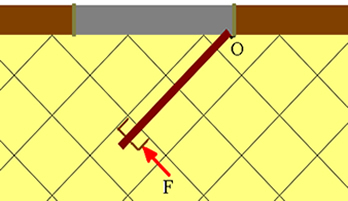Thermometric scales are used to indicate temperature, that is, the kinetic energy associated with the movement of molecules.
In the International System of Units (SI) temperature can be measured in three scales:
- Celsius scale (°C)
- Kelvin Scale (K)
- Fahrenheit scale (°F)
As a reference, they use the melting (ice) and boiling (steam) points of water. Check out the origin and characteristics of each of them below. Remember that the thermometer is the instrument used to measure temperature.
Understand the topic better:
- Heat and Temperature
- Calorimetry
- Melting Point and Boiling Point
- Zero Law of Thermodynamics
- Thermal expansion
Fahrenheit scale
The Fahrenheit Scale was created in 1724 by physicist and engineer Daniel Gabriel Fahrenheit (1686-1736). It is named in honor of its creator.
In the United States and England the temperature is measured in Fahrenheit. The symbol for this thermometric scale is °F.
- Water Melting Point: 32 °C
- Water Boiling Point: 212 °C
Celsius scale
The Celsius Scale was created in 1742 by the Swedish astronomer Anders Celsius (1701-1744). It is named in honor of its creator.
It is the most used thermometric scale in the world, including in Brazil. The symbol for this scale is °C.
- Water Melting Point: 0 °C
- Water Boiling Point: 100 °C
Note: The expressions "Degrees Celsius" and "Degrees Centigrade" are synonymous. However, degrees Centigrade was replaced by the degree Celsius in the General Conference on Weights and Measures (1948).
Kelvin scale
The Kelvin Scale is called the "absolute scale" because it has absolute zero as its reference point. It was created in 1864 by the Irish physicist, mathematician and engineer William Thomson (1824-1907). Gets this name since he was also known as Lord Kelvin. The symbol of this thermometric scale is K.
- Water Melting Point: 273 K
- Water Boiling Point: 373 K
Formulas

The formula used for converting thermometric scales is:

from where,
- Tc: temperature in Celsius
- Tf: temperature in Fahrenheit
- Tk: Kelvin temperature
According to the melting and boiling points of each scale, we can convert between them:
To convert Celsius in Fahrenheit or vice versa:

To convert Celsius in Kelvin:

To convert Kelvin in Celsius:

To convert Kelvin in Fahrenheit or vice versa:

Example
To find the equivalent values of thermometric scales, just add the known value to the formula, for example:
Calculate the value of 40 °C on the Kelvin and Fahrenheit scales:
Celsius to Fahrenheit:

40/5 = tf -32/9
8. 9 = Tf-32
72 = Tf – 32
72 + 32 = Tf
Tf = 104°F
Celsius to Kelvin:

Tk = 40 + 273
Tk = 313k
See too: Unit Conversion
Template Exercises
Thermometric scales are a very demanding topic in entrance exams and in Enem. Check below three exercises that fell on the entrance exam.
1. (Unesp-2003) A pan with water is heated from 25 °C to 80 °C. The temperature variation suffered by the pot with water, on the Kelvin and Fahrenheit scales, was:
a) 32K and 105°F.
b) 55K and 99°F.
c) 57K and 105°F.
d) 99K and 105°F.
e) 105K and 32°F.
Answer: letter b
2. (UFF-1996) A Brazilian tourist, upon disembarking at Chicago airport, observed that the temperature value indicated there, in °F, was one fifth of the corresponding value in °C. The observed value was:
a) - 2°F
b) 2°F
c) 4°F
d) 0°F
e) - 4°F
Answer: letter e
3. (UFF-1995)
When you want to carry out experiments at low temperatures, it is very common to use liquid nitrogen as a refrigerant, as its normal boiling point is -196 °C.
On the Kelvin scale, this temperature is:
a) 77K
b) 100K
c) 196K
d) 273 K
e) 469K
Answer: letter a



